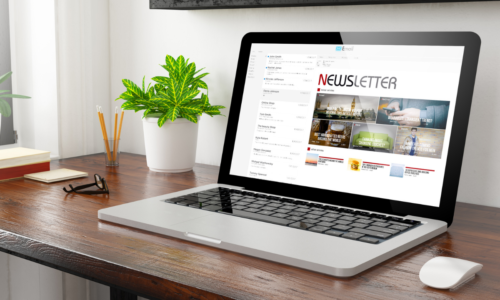More than once we happened to participate in training or business meetings. Often such meetings feature presentations summarizing certain situations in the company, the form of which is so resistant that the listeners if they could, would melt into the air. What to do in a situation where we are the ones who have to prepare such a presentation? How to make our speech substantive and at the same time interesting for the audience? The so-called data storytelling will prove helpful in this case.
Data storytelling – table of contents:
- Data storytelling – what is it all about?
- Where to start?
- Prioritization
- How to properly build a data story?
- Summary
Data storytelling – what is it all about?
With the technological development of corporations, the manner and quality of data communication gained special attention began, e.g. in the case of reports or all kinds of reports presented to clients, management, etc. Thus, fighting against boring presentations, data storytelling was created.
In the simplest terms, it is the telling of data, in a way that creates its story. Numbers are presented in cause-and-effect relationships, so to speak, which means that the recipient is not “attacked” by a pile of numbers. As a result, the perception of the listeners is greater, and the information conveyed is more easily absorbed by them.
Where to start?
Firstly, we need to create a visual presentation, which will be our base. Therefore, we must verify the veracity of the data we intend to include in it. We must not allow a situation in which we refer to data that is incorrect or outdated. The next step is to determine the conclusions we want to reach.
Once we know what we want to prove through the presentation, we must remember to make it clear. We can’t put too much text on a slide. Each slide should be concrete and clearly illustrate the essence of things. Data is best presented in the form of a table, chart, or diagram, but it is recommended to use infographics, graphics, or animations. This way of depicting data makes it more accessible to the viewer.
If we want to emphasize the negative overtones of a given piece of information, it is advisable to use red color to intensify the effect on the recipient. In the opposite situation, when we want to convey the positive overtone of the data to the recipient, it is advisable to green or blue colors.
The font of the text is also important, choose a simple design, without unnecessary ornamentation that disturbs the perception of the essence of the message. Its size is also significant, the smartest decision will be to choose a font of optimal size, easy to read for the recipient. Also, remember not to overdo the amount of text on the slide – it should depict the most relevant data and provide the base for the presenter.
Prioritization
If we already have a visual presentation, we need to think about how to convey it. This is where data storytelling will play a major role. To make our presentation captivating and substantive, properly prepare to present the data. There is a scheme, which is the basis for developing data following storytelling. It is necessary to establish some important points about our presentation.
First, we need to consider who the protagonist of the narrative is, whether we are interested in the company as a whole or, for example, one of its departments, etc. The next issue is to determine the goal or challenge facing the protagonist of the story. In addition, identify obstacles we may encounter on the way to our intended goals, such as legal nuances or staff shortages.
Remember to present the turning point, i.e. the moment when the situation starts to go our way, it is worth highlighting the data that illustrates this. Additionally, remember to highlight the attributes of the company or department affected by the issue and to emphasize what will play a key role in overcoming the difficulties. The final point is to determine what conclusions to draw from the situations described.
How to properly build a data story?
The next step is to put our story together. Traditionally, we should start with an introduction. Here we should focus on introducing the listener to the subject of the problem. To do this, we need to get to know him, and then adapt the form of our speech to his mentality. We can’t overdo the amount of technological gibberish hard to understand for non-specialists. Simple language tailored to the type of audience will work much better.
In addition, the context of the speech should involve the listener as an integral part of the narrative. If the problem affects the audience directly or indirectly, they will certainly be interested in the development of issues.
To begin with, introduce the subject to which the presentation relates. It is also worth noting the starting point of the story and the origin of the referenced data. At this point we can illustrate the data, showing the original situation relevant to the further course of the speech.
Then, based on the next slides of our presentation, we develop the narrative. At this stage, focus on the goal of the main character, e.g. the company, and the obstacles it may encounter. Here, the data may present itself relatively pessimistically, but you shouldn’t avoid it. The negative tone of the mentioned information will only boost the effect of the next part of the speech, in which we will present the turning point – the solution.
Then, it is worth pointing out the controversial aspects of the problem, e.g. greater spending on a particular sector than the competition. This will provoke curiosity in the listeners, who will wonder what the mentioned differences are due to. This will make them want to know the answers and at the same time, we will attract their attention.
The crucial part of the presentation concerns presenting the turning point. In this part, we should pay special attention to the actions that will tip the scales in our favor. The positive impact of the events on the recipient, e.g. the customer or the company’s management, should be emphasized. In this way, we will sustain his interest in the issue. This is because the listener is not interested in dry data, but the moment it will have an impact on real life or financial situation – this interest will increase. Therefore, emphasize a sudden turn of events such as an increase in profits. In this case, a graph clearly showing the success of the venture will do the trick.
Finally, it remains to summarize the situation, show the advantages of the proposed strategy, and highlight the positive effects of the applied solutions and the projected benefits. It is worth comparing the supposed development of the situation without the application of our solution and its impact on those involved. For this purpose, a table comparing the initial situation to the culminating one will be ideal.

Summary
We can define data storytelling as the ability to communicate analytical data to an audience in a way that is meaningful and engaging to them.
Thanks to this technique, throughout the presentation the listeners reflect on the issues raised and expect answers to their questions. Therefore, they will remember a well-told story about data as well as elicit the reactions expected by the presenter. Storytelling stimulates people to interact with the presenter, thus making communication with the audience effective.
If you like our content, join our busy bees community on Facebook, Twitter, LinkedIn, Instagram, YouTube, Pinterest.
Author: Zofia Lipska
With over 10 years of experience in digital marketing, Sophia not only knows the rules of this industry but above all knows how to break them in order to achieve outstanding and creative results.


















